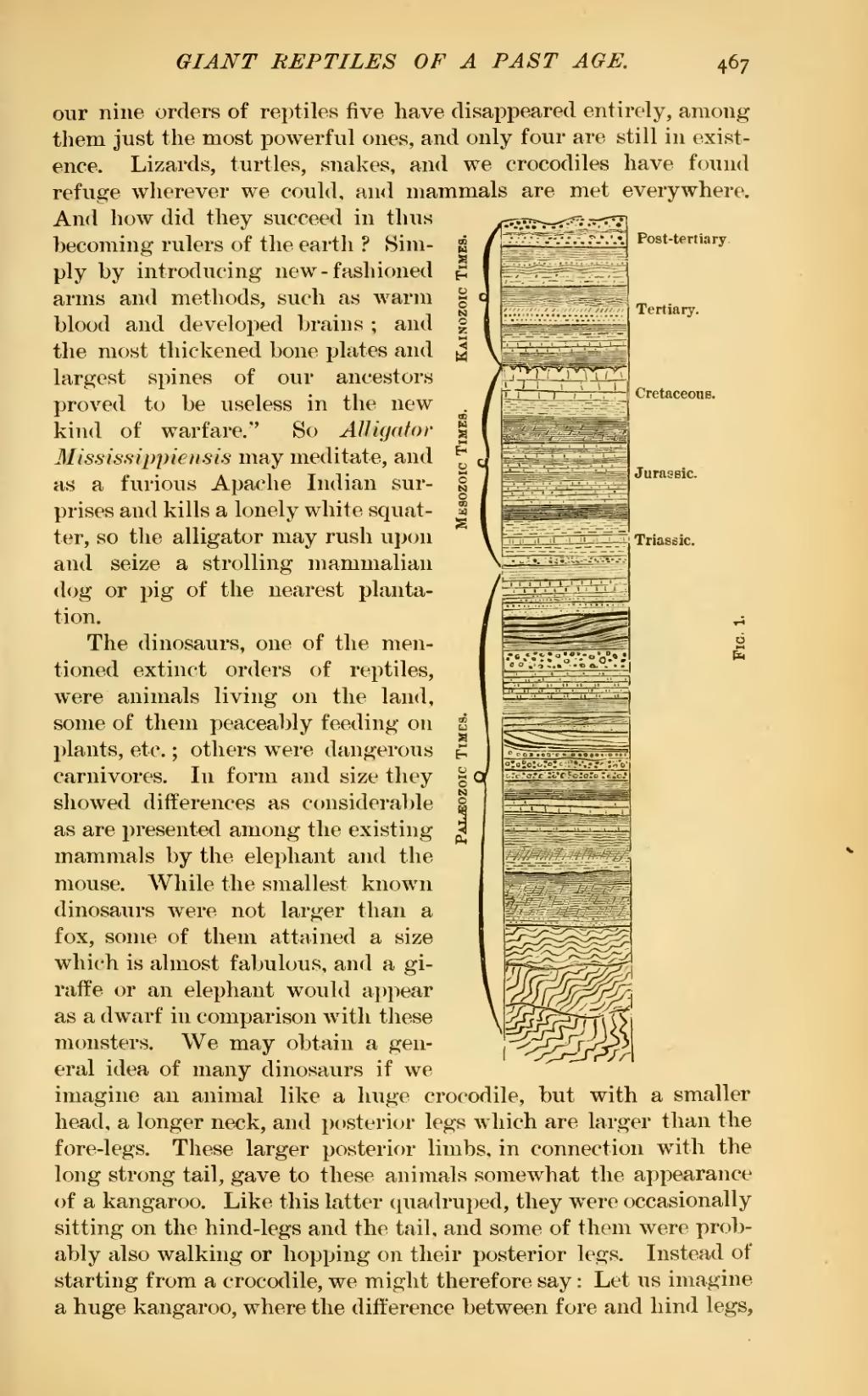our nine orders of reptiles five have disappeared entirely, among them just the most powerful ones, and only four are still in existence. Lizards, turtles, snakes, and we crocodiles have found refuge wherever we could, and mammals are met everywhere. And how did they succeed in thus becoming rulers of the earth? Simply by introducing new-fashioned arms and methods, such as warm blood and developed brains; and the most thickened bone plates and largest spines of our ancestors proved to be useless in the new kind of warfare." So Alligator Mississippiensis may meditate, and as a furious Apache Indian surprises and kills a lonely white squatter, so the alligator may rush upon and seize a strolling mammalian dog or pig of the nearest plantation.
And how did they succeed in thus becoming rulers of the earth? Simply by introducing new-fashioned arms and methods, such as warm blood and developed brains; and the most thickened bone plates and largest spines of our ancestors proved to be useless in the new kind of warfare." So Alligator Mississippiensis may meditate, and as a furious Apache Indian surprises and kills a lonely white squatter, so the alligator may rush upon and seize a strolling mammalian dog or pig of the nearest plantation.
The dinosaurs, one of the mentioned extinct orders of reptiles, were animals living on the land, some of them peaceably feeding on plants, etc.; others were dangerous carnivores. In form and size they showed differences as considerable as are presented among the existing mammals by the elephant and the mouse. While the smallest known dinosaurs were not larger than a fox, some of them attained a size which is almost fabulous, and a giraffe or an elephant would appear as a dwarf in comparison with these monsters. We may obtain a general idea of many dinosaurs if we imagine an animal like a huge crocodile, but with a smaller head, a longer neck, and posterior legs which are larger than the fore-legs. These larger posterior limbs, in connection with the long strong tail, gave to these animals somewhat the appearance of a kangaroo. Like this latter quadruped, they were occasionally sitting on the hind-legs and the tail, and some of them were probably also walking or hopping on their posterior legs. Instead of starting from a crocodile, we might therefore say: Let us imagine a huge kangaroo, where the difference between fore and hind legs,

